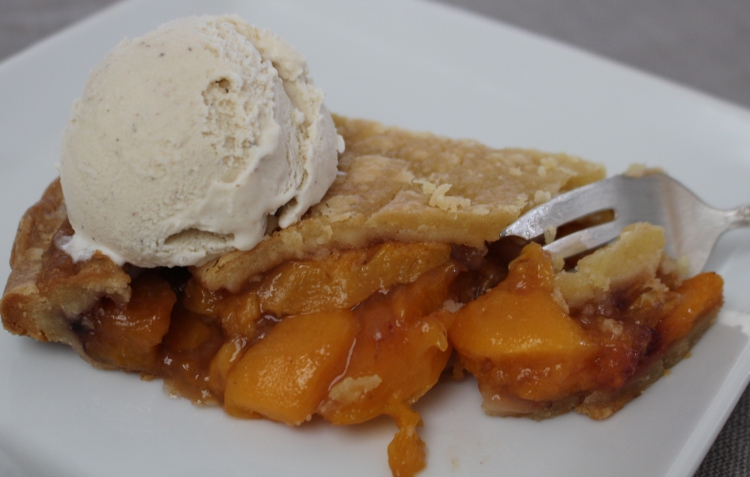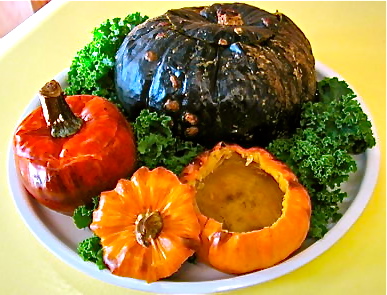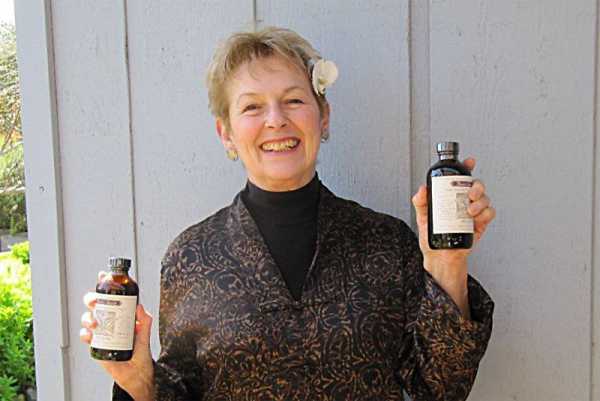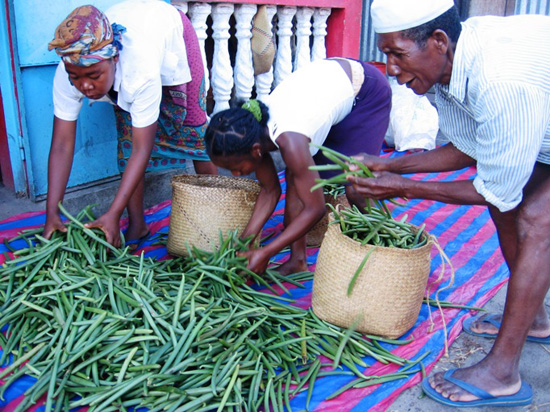
I'm amazed at how superior your vanilla is!
– Des, The Grommet

I admit it — I love to look at Martha Stewart magazines and marvel at the brilliantly clever holiday magic, the perfectly decorated cookies, the floral displays, the beautiful food. But, that’s the extent of it — just looking. After all, who has time? And if I had the time, is that how I’d spend it? Probably not.
However, for quite a while I’ve been intrigued about using squash as edible containers for serving food. They’re quirky, fun, add to the decor and, at the end of the day they’re off to the compost. Sweet.
I decided that the customers at New Leaf Market provided the opportunity for indulging my fantasy — certainly they’d be interested to see them live in 3-D even if they never actually make them at home. I was further invested as the head of produce asked me to come up with a way to move the little decorative-but-edible squash that poured into the market in October.
After some research I decided to tackle three different squash: The darling little flat-topped pumpkins, the slightly larger and more oval-shaped decorative pumpkins and a big kabocha squash. I prepared them according to the directions below and was hugely relieved that they turned out just the way they were supposed to, though a little brown in spots, which just added to their charm. I was further relieved as I ruined the pilaf recipe that would be used to stuff the kabocha squash, at least in theory, as I had no intention of actually stuffing it. It was, after all, my display and the pilaf would get cold, so it would be served separately.
The kitchen was running at warp speed as we now have a hot entree table and salad bar, and hands were flying to prep all the food. I launched the squash into the oven and then made the pilaf, dodging workers carrying chickens to the oven and pulling out sweet potatoes. Unfortunately, what I thought was brown rice (logical, as it was right next to the white rice in the bins) was actually wheat berries. And I didn’t get it until everything was sauteed and cooking in the broth.
1-1/2 hours later, the wheat berries were as hard as BB’s and there was no hope they’d soften before midnight. I nevertheless bravely brought the inedible pilaf to the floor, then deflected the samplers’ attention to the beautiful squash bowls that could be filled with a fluffy, delicious pilaf as long as they used rice, not wheat berries. Fortunately, it worked.
The best part about all of this is that the squash bowls are really simple to make and everyone will be incredibly impressed that you made them. Here’s how you do it:
Mini Pumpkin bowls
Choose the littlest pumpkins with flat tops and bottoms. You may want to make a couple of extras in case of an unlikely, but possible, disaster. If you find you have a few that don’t sit flat, cut a thin slice from the bottom until it they are even, taking care not to pierce deeply into the pumpkin.
Set the pumpkins on a rimmed baking sheet lined with parchment or foil and rub them with olive oil. This will make them shine as if lacquered when they come out of the oven. Bake in a 350 degree oven until tender, about 30 minutes. Let them sit for 10 – 15 minutes before cutting.
With a sharp knife, Cut around the stems leaving a 1-1/2 inch margin, to create lids wide enough to stuff. Carefully scrape out seeds and some of the pulp with a small spoon. Quite honestly, the meat in the little pumpkins isn’t tasty so feel free to compost it. If you get a small hole in the pumpkin, line it with a piece of foil or use your backup supply if necessary.
The little pumpkins are perfect for serving ice cream or sorbet. Chill the little pumpkins in the refrigerator before filling. Pumpkin ice cream, of course, would be a natural, but any flavor is fine.
One easy-to-make flavor is persimmon. The heart-shaped, astringent, Hachiya persimmons are the variety to use. You will need four really ripe persimmons to 1 quart of good-quality vanilla ice cream or a non-dairy vanilla-flavored soy or coconut frozen dessert. You will need about 1/2 teaspoon each of cinnamon and nutmeg or you could use 1 teaspoon of pumpkin pie spice.
Place the ice cream in a large bowl and allow it to soften but not melt. Scoop out the persimmon pulp, discarding the peel and blossom end and place the pulp and spices in a food processor and pulse until it is pureed. Fold the puree into the vanilla ice cream, then freeze until firm enough to shape into balls.
Scoop whatever ice cream you choose into balls and put one in each small pumpkin. You can grate quality dark chocolate over the ice cream balls (especially good on pumpkin and persimmon), put the tops on the little pumpkins, then carefully wrap and freeze them. They will need to sit out for at about 20 minutes before serving. You can also make the shells a day ahead and chill until ready to use.
Decorative Pumpkins as Soup Bowls
Choose slightly larger pumpkins as bowls for soup or pilaf. Follow the instructions above, making the squash bowls the day ahead. Place bowls on salad plates, ladle soup into bowls, and serve. Here’s a quick-but-delicious squash soup recipe that tastes homemade.
Big Squash Bowls for Serving Stews, Pilaf or Casseroles
The best containers for serving stews or casseroles are the kabocha and other hard-shell squashes as they hold their shape well when baked.
Preheat oven to 375 degrees. Rinse squash and pat dry. Place in a lined baking sheet or pan. Bake for 40 – 50 minutes or until squash is tender but not overly soft. Let rest 15 minutes.
Cut around the stem to make a 4-inch lid. Remove lid and scrape out and discard seeds (or roast them for snacking). Brush interior of squash and inside of lid with 1 tablespoon olive oil. Sprinkle lightly with salt and pepper. (You can make this the day ahead if you’d like and refrigerate it. Warm it in the microwave or oven before stuffing it.)
You can also cut open the top while the squash is raw, hollow it, rub oil on the inside of the squash and sprinkle in salt and pepper. I chose to cut it open after as it was a lot easier.
Carefully transfer the squash to a serving dish or platter and fill. Use the top as a lid or set it next to the squash. If you are serving pilaf in the squash, you can carefully cut the squash lengthwise down to the serving plate – but not through the base – into 8-to-10 wedges. Gently open the wedges for a flower-like presentation. Kabocha squash have vertical lines you can use as a guideline (thoughtful of the squash to make it so easy). Each diner can take a wedge of squash with the pilaf. Serve additional pilaf in a bowl for seconds. This is one of my favorite pilaf recipes.
Whether or not you decide to go to go this route, you can buy squash pretty cheaply, especially at food stands in the countryside. They make perfect table decorations, especially mixed with gourds and autumn leaves. And, after Thanksgiving, you can always spray paint them silver or gold for the December holidays! Ah, shades of Martha.
I was given a small bottle of Rain’s Choice in a gift basket and I have been hooked ever since. The flavor makes all of my baking so much better! I will never use grocery store vanilla again!


© 2021. All Rights Reserved
Designed/Developed by Kat & Mouse